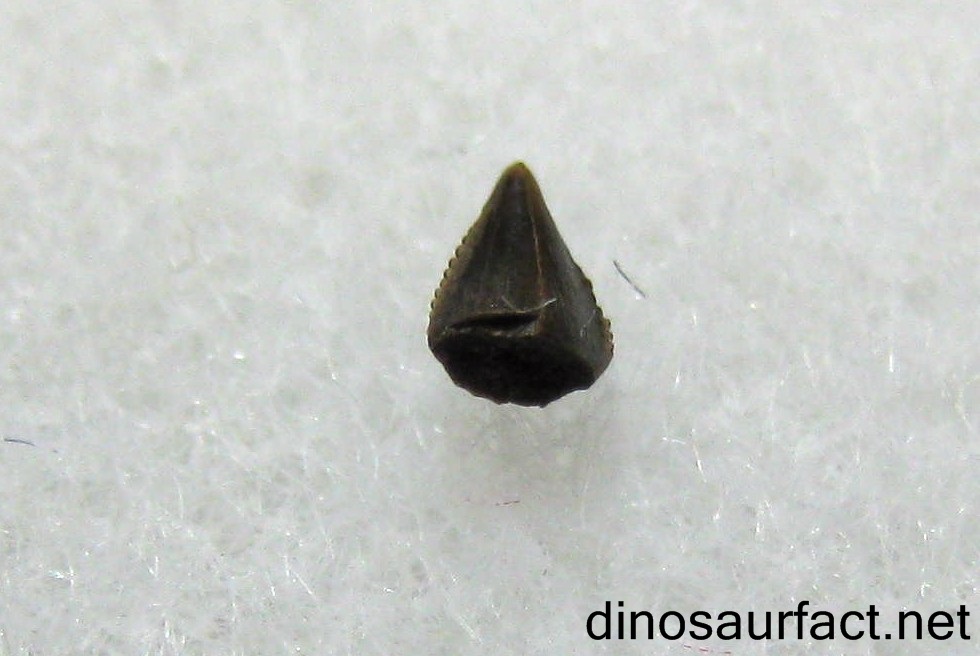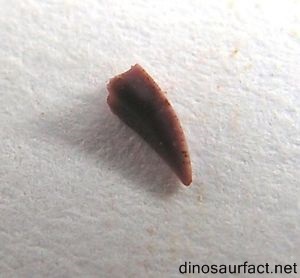 Click to visit the previous dinosaur bio
Click to visit the previous dinosaur bio
 |
|
 |
|
Kingdom: Animalia
Phylum: Chordata
Class: Sauropsida
Superorder: Archosauromorpha
Order: -Not Described-
Suborder: -Not Described-
Family: -Not Described-
Genus: Technosaurus
 |
|
 |
|
 |
|

The Technosaurus was a vertebrate organism that was in existence in the middle to late Triassic period. The taxonomic classification of the Technosaurus is yet not clear. Very few fossils are available that are ascribed to the Technosaurus. And there is no consensus on the nature and characters of these remains.
As the fossils were discovered in Texas, it is known that the Technosaurus was a North American dinosaur. As the features of its bones match primitive vertebrates more closely than evolved dinosaurs, it can be deduced that it probably could have existed with the earliest dinosaurs; or may have been a basal dinosaur itself. The timeline of its presence on the earth can be narrowed down to 230 to 215 million years ago.
Very little is known about the other characteristics and habits of the Technosaurus, mainly due unavailability of evidence. But my paleontologists speculate that it was a rather small creature, possible the size of basal theropods and sauropods. It was most likely a quadruped. It is difficult to say whether it could balance itself on its hind legs.
Etymology
The excavation expedition that led to the discovery of the Technosaurus was undertaken by the Texas Tech University. And the remains were found very close to the University as well. Thus, the name 'technosaurus' honors the Texas Tech University. 'Techno' is derived from the Greek word 'tekhne' which means 'acumen' or 'skill'.
The binomial name Technosaurus smalli was chosen to acknowledge the assistance of scientist Bryan Small in the uncovering and examination of the fossils.
Discovery of fossils
The fossils attributed today to the Technosaurus were discovered in the Cooper Canyon Formation of the Dockum group of North America. This is located in the state of Texas.
The fossils were found by paleontologist Sankar Chatterjee.
Nature of fossils
During the pilot excavation, about four different types of bones were uncovered. These included parts of the upper jaw i.e. the maxilla. The two sections of the mandible, unjointed at the mandibular symphyses were found, which were well preserved. A single vertebra was discovered which could not be classified further. A metacarpal was also found which was classified as the 'talus' bone.
Classification
- Based on the remains excavated, Sankar Chatterjee had classified they as those belonging to an ornithischian or 'bird hipped' dinosaur in 1984. He believed it to be similar to the Fabrosaurus. Thus he concluded that Technosaurus was a small bipedal dinosaur.
- But on further examination, scientist Paul Sereno was of the opinion that the vertebra and foot bone were not from the same species as the jaw bones. He determined the jaw bones to belong to a basal sauropodomorph dinosaur. Sauropods are saurischian dinosaurs. But most prosauropods were tiny, bipedal dinosaurs and this was the one area where Sereno at least partly concurred with Chatterjee.
- But in 2007, Nesbitt, Irmis and their associates opined that part of the jaw bone ascribed to the Technosaurus belonged to the Shuvosaurus, the fossils of which were discovered by Chatterjee himself. They also maintained that the remnant fossils did not bear any resemblance to organisms belonging to clade Dinosauria. But they did co concede that the remains could have been related to the Silesaurus.
- They determined that the Technosaurus was a distinct genus defined by the pre-maxilla and part of the mandible. But they hesitated to classify it any further.
The Cooper Canyon Formation and the Dockum group
The Dockum group is a natural rock formation encompassing the states of New Mexico, Texas and a few others. The Dockum group was deposited in the same historical time period as the Chinle Formation. They are considered to be the same structure by many scientists. The subdivisions of the Dockum group are as follows:
- Santa Rosa Sandstone
- Tecovas Formation
- Trujillo Sandstone
- Cooper Canyon Formation
- Redonda Formation
The Cooper Canyon comprises primarily of alluvium deposits laid by the lakes and slow flowing rivers in the region during the Triassic period. Other vertebrates such as the Shuvosaurus and the Poposaurus were also uncovered in this formation.
Sankar Chatterjee
Sankar Chatterjee is a contemporary paleontologist from West Bengal, India. He finished his post doctorate from the University of Kolkata.
He has worked extensively in Texas and adjoining areas and has uncovered many reptilian, amphibian and avian fossils. He is the author of innumerable publications and books.
Chatterjee named the 'Shuvosaurus' after his son 'Shuvo'.
Physical features
- As the Technosaurus is only defined by two pieces of bones, it has been a challenge for scientists to determine its phenotypic characters.
- The Technosaurus was most probably a small sized dinosaur weighing no more than 15 to 30 kilos. Its length likely did not exceed three meters.
- If the Technosaurus resembled the Silesaurus, it was possibly a quadruped.
- Its snout was long, judging by the maxillary and mandibular fossils.
- It most probably was quick runner.
Habits and habitats
- The jaw bones of the Technosaurus have been inconclusive in determining its feeding habits. But most scientists presume that it could have been herbivorous.
- The Technosaurus was definitely a land dwelling organism.
- No other information is available about its feeding or nesting habits.
- The habitat of the Technosaurus consisted of abundant water bodies along with wooded areas. The fossils of organisms living in woodlands are very rarely well preserved.
Related and coexisting species
The classification of the Technosaurus is yet not completed. Thus it is difficult to determine its familial relationships. The fossils of the Technosaurus resemble those of the Silesaurus and the two could be related.
It could possibly have coexisted with the Caseosaurus, Chindesaurus, Gojirasaurus and the Daemonosaurus.
Conclusion
The only information that can be considered canon about the Technosaurus is that it was a Triassic dinosauriform or archosaur. Its similarity to a host of different vertebrate groups evinces the rapid development of dinosaurs and related species in the Triassic period.
The discovery of the Technosaurus has given scientists a glimpse into the evolutionary process of the reptilians. The diversification of reptilians, amphibians and birds has always been fascinating phenomenon for most scientists and species like the Technosaurus are perfect specimens to study for understanding it.
As more Triassic vertebrates are discovered, the position of the Technosaurus in the taxonomic tree will be better understood.
Index
Extinct Profiles
 Triassic Dinosaurs
Triassic Dinosaurs Jurassic Dinosaurs
Jurassic Dinosaurs Cretaceous Dinosaurs
Cretaceous Dinosaurs Pterosaurs
Pterosaurs Marine Reptiles
Marine Reptiles Dinosaur Extinction
Dinosaur Extinction